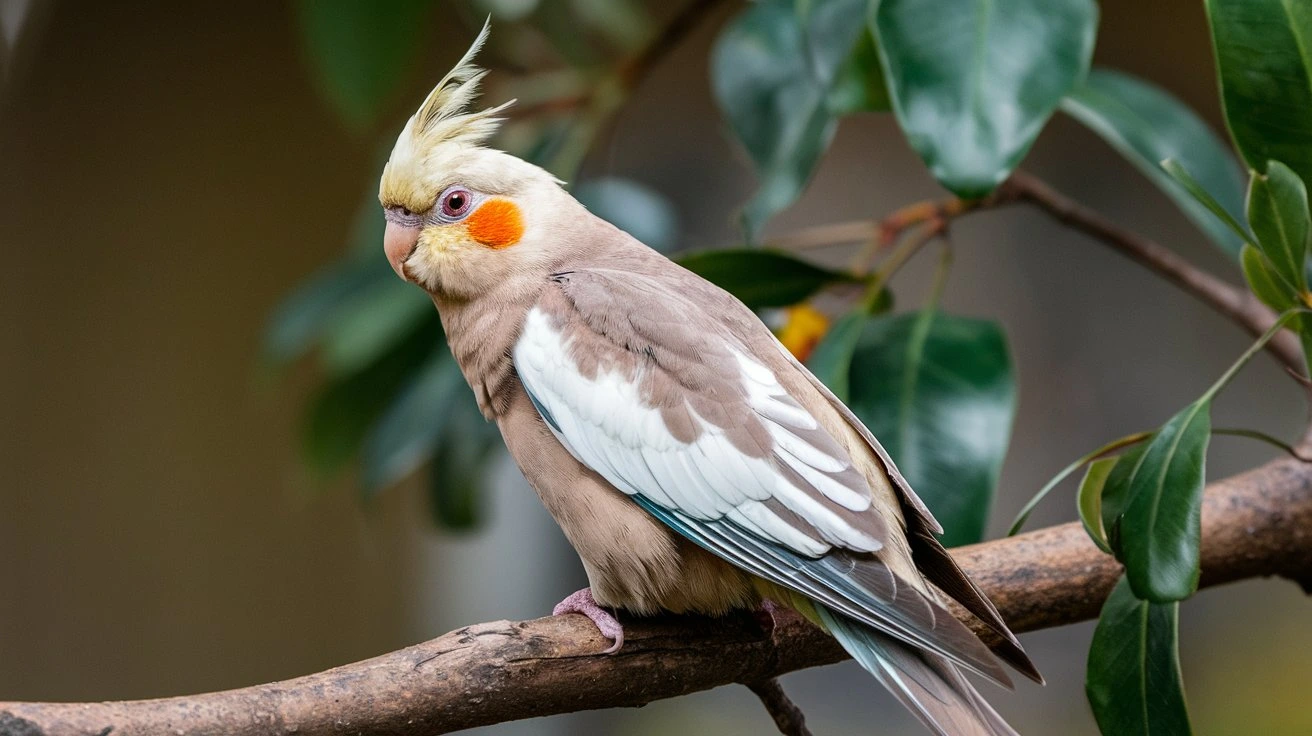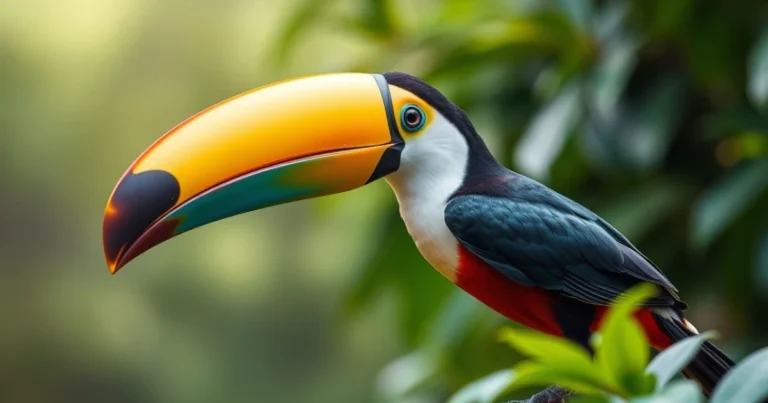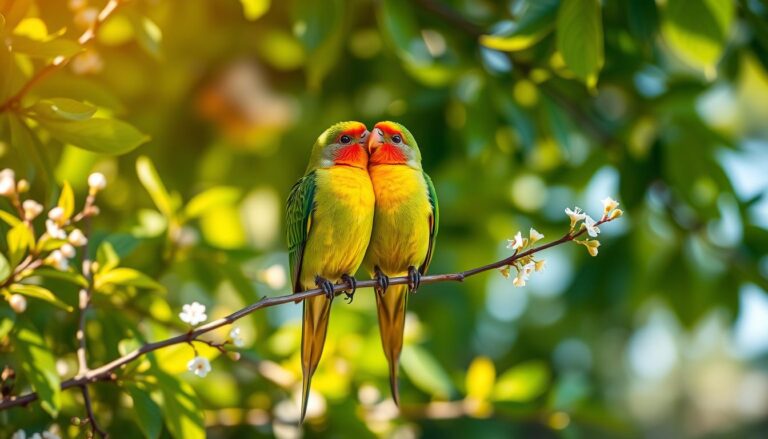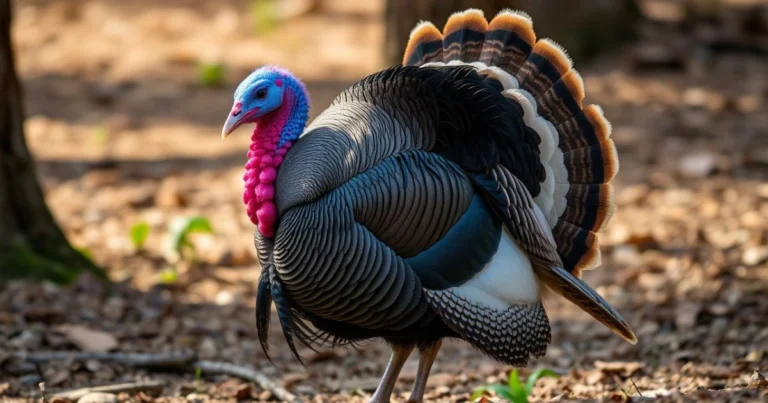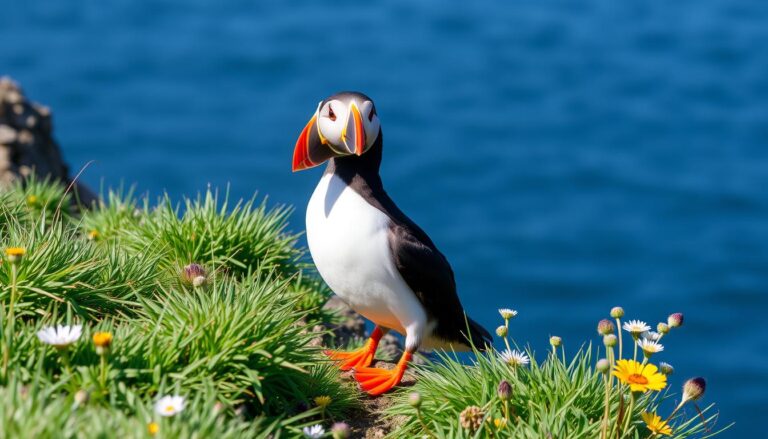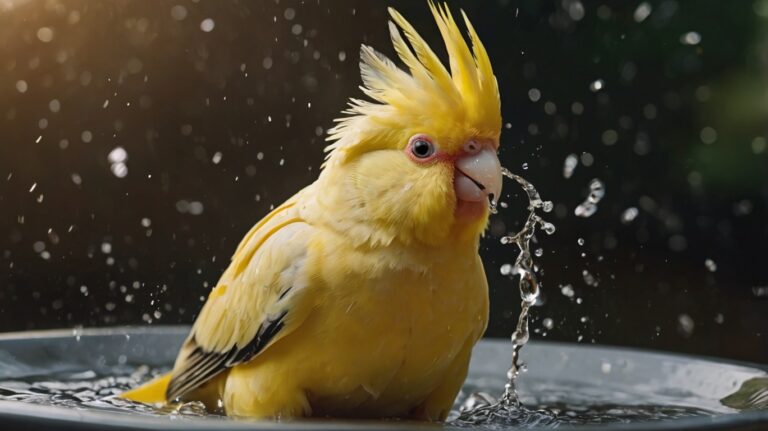Cinnamon Cockatiel: 7 Astonishing Reasons to Love This Delightful Bird
Introduction
Picture this: you walk into a room, and a friendly bird with soft, cinnamon-brown plumage chirps in greeting, cocking its head curiously. That’s the enchantment of a cinnamon cockatiel. Whether you’re brand new to the avian world or you’ve already cared for a few feathered friends, you’ll likely find the cinnamon cockatiel’s inquisitive eyes, gentle demeanor, and subtle color scheme hard to resist.
In this guide, you’re going to learn all about how the cinnamon cockatiel came to be, why it’s quickly becoming a favorite among bird enthusiasts, and how to keep one happy, healthy, and downright joyful in your home.
The History and Genetics of the Cinnamon Cockatiel
A Brief Look at Cockatiel Origins
Cockatiels (scientifically known as Nymphicus hollandicus) hail from the arid and semi-arid inland regions of Australia, where they thrive in flocks and feast primarily on seeds. In the wild, their plumage is typically gray with yellow and orange accents on the face. Over time, bird enthusiasts discovered a variety of color mutations, like the lutino, pied, pearl, and, of course, the cinnamon cockatiel.
Why “Cinnamon”?
The term “cinnamon” references the warm-brown hue that replaces the standard gray in classic cockatiel feathers. Genetics play a major role here: this specific mutation alters the black eumelanin pigment, lightening it to soft browns. According to the American Federation of Aviculture, color mutations in cockatiels are generally inherited as recessive traits (source). That means both parents need to carry the gene for the cinnamon coloration to show up in their offspring.
How Cinnamon Cockatiel Genetics Work
- Recessive Trait: The cinnamon variation is typically recessive; two cinnamon-carrying parents increase the chances of producing cinnamon offspring.
- Sex-Linked Mutation: Many cockatiel color variations, including cinnamon, can be sex-linked. This means the trait can be passed from fathers to daughters or mothers to sons in specific ways.
- Breeding Considerations: Breeders often keep detailed records to predict color outcomes. Before adopting or purchasing a cinnamon cockatiel, ask the breeder about its lineage.
Understanding these genetics can help you appreciate the unique beauty of your cinnamon cockatiel even more. It’s like having a little piece of evolutionary art right in your living room.
Recognizing the Cinnamon Cockatiel’s Distinct Appearance
Color Palette and Markings
What truly sets the cinnamon cockatiel apart is the subdued warm-brown tone that takes over the main body, with light gray or tan shading on the wings. You’ll still find those iconic orange cheek patches that cockatiels are famous for, along with the striking crest on their heads. However, instead of the stark gray, the cinnamon cockatiel appears as if it’s been dusted with cinnamon powder—hence the name.
Differences Between Cinnamon Cockatiel and Other Mutations
To better illustrate how the cinnamon cockatiel stacks up against other popular mutations, here’s a handy table:
| Cockatiel Variety | Primary Coloration | Genetic Notes | Temperament |
|---|---|---|---|
| Cinnamon Cockatiel (Focus) | Warm brown with subtle gray or tan hues | Sex-linked recessive; requires both parents carry the gene | Gentle, playful, affectionate |
| Lutino Cockatiel | Mostly white or pale yellow with bright orange cheeks | Often paired with other mutations to enhance color | Friendly, vocal, loves attention |
| Pearl Cockatiel | Spotted or “pearlized” pattern on back and wings | Also sex-linked; each feather can show patterns | Curious, sometimes shy |
| Pied Cockatiel | Random patches of yellow or white on gray plumage | Dominant trait; can appear with various color combos | Outgoing, interactive |
| Classic Gray Cockatiel | Gray body with yellow head and orange cheeks | Wild-type coloring | Sociable, widely known as the “standard” |
As you can see, each color mutation has its own quirks, but many enthusiasts say the cinnamon cockatiel’s soft hue makes it especially endearing.
Why the Cinnamon Cockatiel Makes a Fantastic Pet
Temperament and Personality
A cinnamon cockatiel is typically sweet, sociable, and eager to bond with its human companions. While every bird has its own personality, many owners describe their cinnamon cockatiel as playful, relatively calm, and keen on gentle head scratches. They can learn simple whistles and may even mimic a few words if they’re in the right mood.
- Playful Nature: Provide toys, and you’ll see your cinnamon cockatiel happily chewing, swinging, or foraging.
- Companionship: They can grow attached to their human family and sometimes show off little “fluff-up” dances.
- Gentle Whistling: With patience, your cinnamon cockatiel might learn to whistle popular tunes or short phrases.
Health and Lifespan
Under optimal care, a cinnamon cockatiel can live anywhere from 15 to 25 years. That’s a considerable time commitment, but also a deeply rewarding one. The key to a long, happy life is proper nutrition, regular vet check-ups, and mental stimulation. According to the American Veterinary Medical Association, regular avian veterinary visits can detect potential issues before they escalate (source).
- Balanced Diet: Include a high-quality pellet base supplemented with fresh vegetables and occasional seeds.
- Routine Check-ups: An annual exam can catch problems early.
- Clean Environment: A tidy cage and fresh water daily reduce the risk of infections.
By staying proactive about care, you help ensure your cinnamon cockatiel remains a bright and cheerful presence in your home for years to come.
Setting Up the Ideal Home for Your Cinnamon Cockatiel
Cage Selection and Placement
A cage that’s too small can lead to stress and boredom. Generally, experts recommend a minimum cage size of 24 inches wide, 24 inches tall, and 24 inches deep for a single cinnamon cockatiel. Ensure there’s enough room for perches, food dishes, and plenty of toys.
- Bar Spacing: Look for 0.5–0.75 inches between bars. This spacing keeps your cinnamon cockatiel safe from getting its head stuck.
- Location: Place the cage in a well-lit area but away from direct drafts or open windows. Cockatiels love being part of family activities, so a living room or frequently visited space is ideal—just not too close to the kitchen or anywhere with smoke or fumes.
- Quiet Corners: Even though they’re social, cinnamon cockatiels also need a calm area to retreat to, especially for sleep. Cockatiels require around 10 to 12 hours of rest each night.
Essential Accessories
- Perches: Mix natural wood perches with rope perches to promote foot health.
- Toys: Rotate a variety of chewable toys, bells, and foraging puzzles to keep your cinnamon cockatiel mentally engaged.
- Cage Liners: Newspaper or commercial cage liners can simplify cleaning. Replace them daily or every other day.
Lighting and Sleep
Cockatiels benefit from a regular light-dark cycle to regulate their behavior. Cover the cage at night if the room remains lit. This helps your cinnamon cockatiel understand it’s bedtime and reduces overstimulation.
Nutrition and Feeding Guidelines
Balanced Diet Breakdown
Your cinnamon cockatiel’s diet should primarily consist of high-quality pellets designed for cockatiels. Pellets typically make up about 60–70% of the bird’s nutritional intake, supplemented by fresh vegetables, fruits, and small amounts of seeds.
- Pellets: Offer a brand formulated for cockatiels, free of artificial dyes if possible.
- Fresh Veggies: Dark leafy greens like kale or spinach, carrots, broccoli, and bell peppers provide vitamins and minerals.
- Fruits: Apples (seedless), berries, and small pieces of banana are tasty treats but should be given in moderation due to sugar content.
- Seeds: Seeds can be a part of your cinnamon cockatiel’s diet, but too many can lead to obesity. Use them as training rewards rather than a staple food source.
Hydration and Supplements
Fresh water must be available at all times. Some owners use water bottles, while others prefer bowls. Replace the water every day to avoid the buildup of bacteria. As for supplements, consult with an avian vet before adding calcium blocks or vitamin mixes. Over-supplementation can be harmful, so it’s best to tailor these to your cinnamon cockatiel’s specific needs.
Training and Socializing Your Cinnamon Cockatiel
Positive Reinforcement Basics
A cinnamon cockatiel thrives on gentle, consistent training methods. Positive reinforcement—offering praise, treats, or affection when your bird does something good—encourages repeat behavior. Here’s a simple approach to get started:
- Hand Taming: Offer your finger or hand as a perch. If your cinnamon cockatiel steps up, reward with a small seed or a soft “Good bird!”
- Target Training: Use a small stick or dowel for the bird to follow. When your cinnamon cockatiel touches the stick with its beak, reward immediately.
- Whistling Practice: Whistle a short tune daily. Your cinnamon cockatiel might attempt to mimic it if you’re consistent.
Handling Fear or Aggression
While cinnamon cockatiels are generally docile, fear or aggression can occur if the bird feels threatened. If you notice hissing, backing away, or lunging:
- Slow Down: Give your cinnamon cockatiel space and time to relax.
- Build Trust: Spend quiet time near the cage, reading or talking softly. This allows your bird to feel safer and more relaxed around you.
- Gradual Interaction: Offer treats through the cage bars until your cinnamon cockatiel becomes comfortable with you again.
Keeping Your Cinnamon Cockatiel Entertained
Creating an Enriching Environment
One key aspect of cockatiel care is mental stimulation. A bored cinnamon cockatiel can develop negative behaviors like excessive screaming or feather plucking. Keep things fun and varied:
- Toy Rotation: Switch out toys weekly to spark fresh interest.
- Foraging Opportunities: Hide small treats in safe puzzle toys.
- Interactive Play: Let your cinnamon cockatiel explore supervised areas outside the cage.
Social Interaction
Cockatiels are flock birds by nature, so they crave company. Spending at least an hour or two of direct interaction each day helps maintain a strong bond. If you’re away often, consider getting a second cinnamon cockatiel or another cockatiel mutation—provided you have enough space and resources—to keep your bird company.
Grooming and Hygiene Practices
Bathing
Most cinnamon cockatiels enjoy water, whether it’s a shallow dish to splash in or a gentle misting. Bathing not only helps keep feathers clean but also relieves skin dryness, especially in drier climates.
- Bird Bath Dish: Offer lukewarm water in a shallow bowl in or near the cage.
- Misting: Use a spray bottle with warm water, gently misting from above so it mimics rain.
Nail and Beak Care
- Nail Trimming: Overgrown nails can cause discomfort. A vet or experienced bird groomer can trim them safely.
- Beak Maintenance: A healthy cinnamon cockatiel typically wears down its beak naturally on cuttlebones or mineral blocks. If the beak appears overgrown or asymmetrical, consult a vet.
Cleaning the Cage
Aim for a daily spot-clean of food and water dishes, with a thorough cage cleaning once a week. Clean perches and toys regularly to reduce bacteria buildup. A tidy living space keeps your cinnamon cockatiel happier and healthier.
Common Health Issues and Prevention
Signs of a Healthy Cinnamon Cockatiel
A thriving cinnamon cockatiel will be alert, active, and bright-eyed. Feathers should look smooth and well-groomed, without bald spots or excessive fluffing. Droppings should be firm and well-formed, with no drastic color changes. A good appetite and steady weight are also positive indicators.
Potential Illnesses
Cockatiels can be prone to respiratory infections, feather plucking, and nutritional deficiencies if not cared for properly.
- Respiratory Infections: Look for sneezing, nasal discharge, or labored breathing.
- Feather Plucking: Often stress-related or due to lack of mental stimulation.
- Calcium Deficiency: Can result in weak bones or egg-binding in females. A varied diet plus periodic vet check-ups help prevent this.
If you spot any concerning symptoms, call your avian vet immediately. Timely action can have a significant impact.
Social Compatibility: Pairing Your Cinnamon Cockatiel
Cockatiel vs. Cockatiel
If you’re considering adding a second cinnamon cockatiel or another cockatiel mutation (like a lutino cockatiel) to your flock, gradual introductions are key. Maintain separate cages initially, then allow supervised interaction once they show curiosity toward each other without aggression. Cockatiels can form strong bonds with flock mates, offering each other comfort and companionship.
Quick Tip: For more insights on other cockatiel color variations, check out this resource on the lutino cockatiel.
Cockatiel and Other Species
Cockatiels sometimes coexist with compatible small birds like budgies or lovebirds, but you should never assume they’ll automatically get along. Monitor interactions closely to ensure safety. If aggressive behavior emerges, house them separately to reduce stress and possible injury.
Activity Ideas and Bonding Sessions
Out-of-Cage Time
Spending time outside the cage is one of the best ways to bond with your cinnamon cockatiel. Allow your bird to stretch its wings in a bird-proofed area. Windows and mirrors can pose collision hazards, so consider covering them or placing stickers to alert your bird.
- Short Flights: If your cinnamon cockatiel’s wings are not clipped, supervised flight sessions can be excellent exercise.
- Training Games: Teach your bird to step up onto different surfaces, or gently toss a small ball to see if it will “catch.”
- Snuggle Sessions: Some cinnamon cockatiels love sitting on your shoulder while you watch TV or read.
Talking and Whistling
Cockatiels aren’t the world’s most talkative parrots, but they can pick up a few words or phrases. Repetition is key. Greet your cinnamon cockatiel the same way each morning, or whistle the same tune every day. Over time, your bird may surprise you by whistling back.
Navigating Behavioral Challenges
Excessive Screaming
Cockatiels may scream to get attention or out of boredom. If your cinnamon cockatiel is especially vocal:
- Identify the Trigger: Does it scream when you leave the room, or is it bored during the day?
- Positive Reinforcement: Reward quiet moments with attention or treats. Avoid scolding, which can reinforce negative behavior.
- Mental Stimulation: Provide new toys, foraging activities, or rearrange the cage layout to keep the environment fresh.
Fearful or Timid Behavior
Some cinnamon cockatiels are naturally shy. Work at your bird’s pace, offering gentle spoken reassurances and treats. Respect boundaries—never force interaction. Over time, consistent kindness usually wins them over.
Real-Life Example: My Cinnamon Cockatiel Experience
Let me share a personal story about my very own cinnamon cockatiel, “Sunny.” Despite the cozy name, Sunny was initially quite reserved and often fluttered away whenever someone approached. Over a couple of months, I spent time just sitting next to his cage, reading aloud or softly whistling. Eventually, Sunny grew curious, creeping closer to the bars to watch me. After countless gentle attempts, he stepped onto my hand for the first time—a small but glorious milestone! Today, Sunny whistles along with my favorite tunes and greets me each morning with a chirpy “hello” (or his close attempt at it).
This personal journey taught me that patience, respect, and positive reinforcement can transform even the shyest cinnamon cockatiel into a beloved companion.
Integrating Internal Resources
When diving deeper into the vast world of cockatiels, you may find advanced topics, like genetic pairings or specialized diets, in resources such as [INTERNAL LINK 2], [INTERNAL LINK 3], and [INTERNAL LINK 4]. Each internal link covers unique aspects of bird care, from breeding ethics to advanced training techniques, helping you refine your cinnamon cockatiel expertise. Feel free to explore them if you want to elevate your avian knowledge even further.
Frequently Asked Questions (FAQs)
FAQ 1 : Are cinnamon cockatiels friendly?
Yes, a cinnamon cockatiel is known for its affectionate demeanor. Most of them love gentle human interaction and daily attention. With proper socializing, your cinnamon cockatiel will likely become a friendly companion.
FAQ 2 : How long do cinnamon cockatiels live?
A cinnamon cockatiel can live 15 to 25 years with good care. This includes a balanced diet, regular vet visits, and daily interaction. Ensuring your cinnamon cockatiel’s well-being can extend its lifespan.
FAQ 3 : Can cinnamon cockatiels talk?
Some cinnamon cockatiels can mimic words or phrases, but they’re better at whistling. Consistent repetition helps them learn basic speech. Each cinnamon cockatiel has its own talent and pace.
FAQ 4 : What should I feed my cinnamon cockatiel?
A balanced pellet diet plus veggies and fruits is ideal for your cinnamon cockatiel. Seeds are okay as treats in moderation. Always offer fresh water to keep your cinnamon cockatiel healthy.
FAQ 5 : How do I tame a shy cinnamon cockatiel?
Gentle, daily interaction works wonders on a shy cinnamon cockatiel. Offer treats, speak softly, and respect its pace. With patience, your cinnamon cockatiel will gradually build trust.
FAQ 6 : Do cinnamon cockatiels need a companion?
A cinnamon cockatiel often thrives with social interaction, whether it’s human or another cockatiel. If you’re away frequently, a feathered buddy can reduce loneliness. Just ensure proper introductions so your cinnamon cockatiel feels safe.
Conclusion
A cinnamon cockatiel isn’t just another pretty bird; it’s a warm, friendly, and intelligent companion that can bring endless joy into your life. By providing proper nutrition, daily interaction, and a stimulating environment, you can ensure a fulfilling life for both you and your feathered friend. So whether you’re a seasoned bird enthusiast or a first-time owner, a cinnamon cockatiel has the potential to become a beloved member of your home. Now that you know what’s involved, why not take the plunge? Feel free to share your own cinnamon cockatiel experiences or questions in the comments below—your input might just inspire others on their avian journey.
For further expert guidance on bird care, check out the American Veterinary Medical Association’s tips on avian health.

